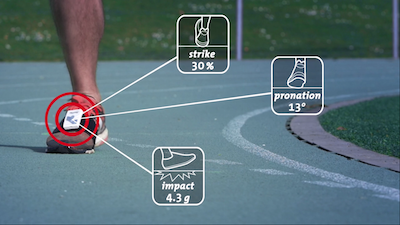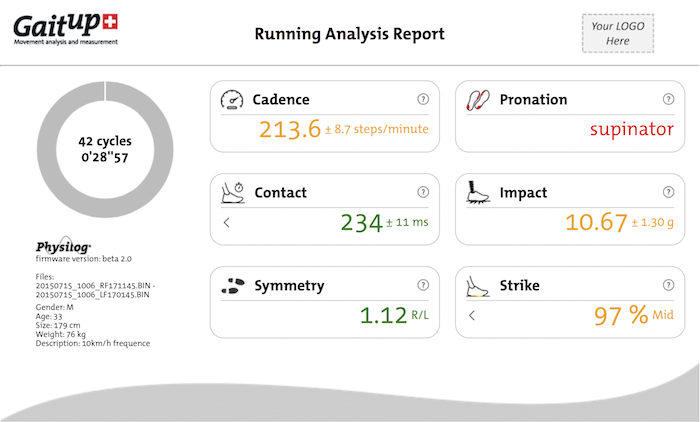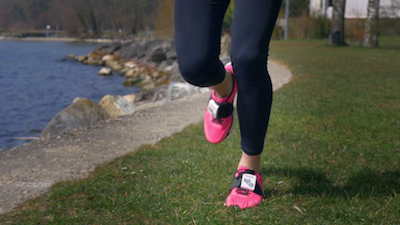- Contact person: Mathieu Falbriard
- People involved: Mathieu Falbriard
- Partners: University of Lausanne, GaitUp SA
- Funding source: CTI

Overview
This project aims to provide a tool to coaches, sport clinicians and shoe retailers in order to improve running activity while keeping the runners safe. Using foot worn inertial units (Physilogs) and some of the latest wireless communication technologies, the goal is to design a system, light weight, fast and easy to use able to provide an objective evaluation of the spatiotemporal running gait parameters of trials performed outside of a laboratory, in real running conditions. Through the building of a reference database, this device also aims to compare the extracted parameters to safe and unsafe running patterns to evaluate a possible risk of injury and provide useful feedback on the running techniques. This project is the result of the collaboration between Gait Up S.A., ISSUL (University of Lausanne) and our lab.
Method
Combining 6 different types of foot worn motion sensors (3D accelerometer, 3D gyroscope, 3D magnetometer, barometric pressure, plantar pressure and GPS) this project aims to provide validated algorithms able to extract running gait parameters which are useful to running specialists. In this respect, several challenges can be noted. First recorded signals must be calibrated (e.g. aligned with the foot anatomical frame) in order to avoid the influence of the sensor orientation. Then temporal events such as foot strikes must be detected in the presence of high impact noise. Moreover accelerometer and gyroscope signals have to be integrated in order to estimate the foot displacement and orientation in 3 dimensions. This process generates important drift and noise which need to be removed for accurate estimation results. This entire process is computed in the cloud and retrieved to the end-user in the form of a report accessible directly on a smartphone or a tablet.
Results
Preliminary algorithms, which have not been validated yet show promising results and are implemented in a beta version that is being tested by running specialists. Their feedback will help focusing on parameters, which are useful for coaches, podiatrist and shoe retailers. Our database of running IMU data is increasing and has reached more than 130 trials within the first month. The next steps will be to validate our algorithms and to compare our results with gold standards measurement devices.

